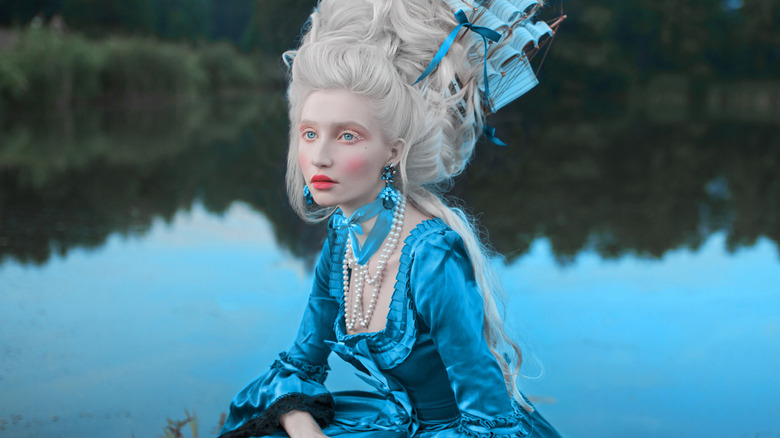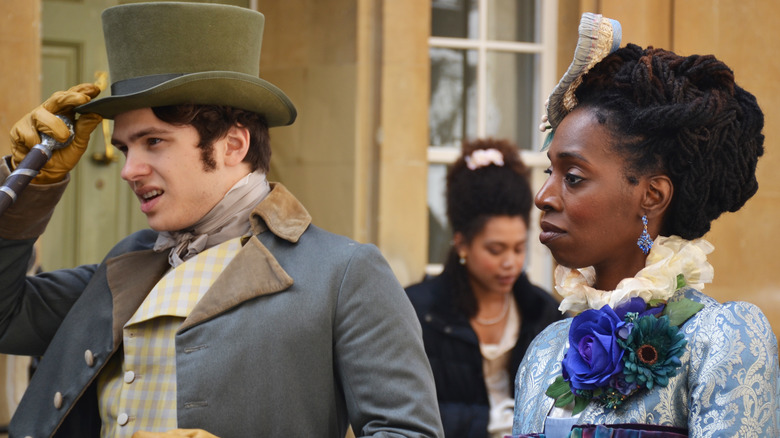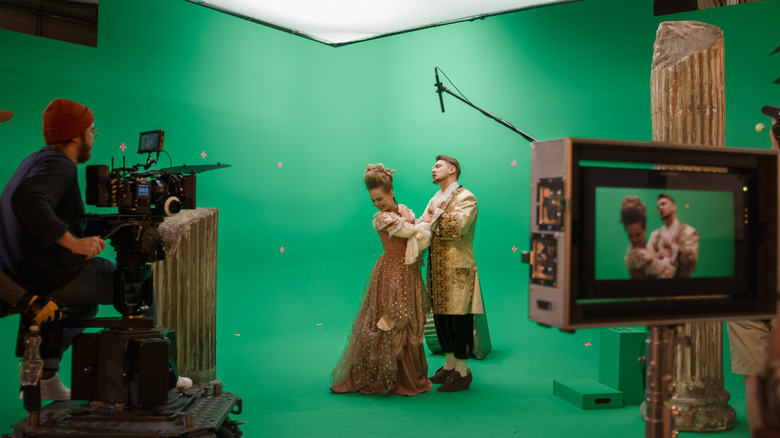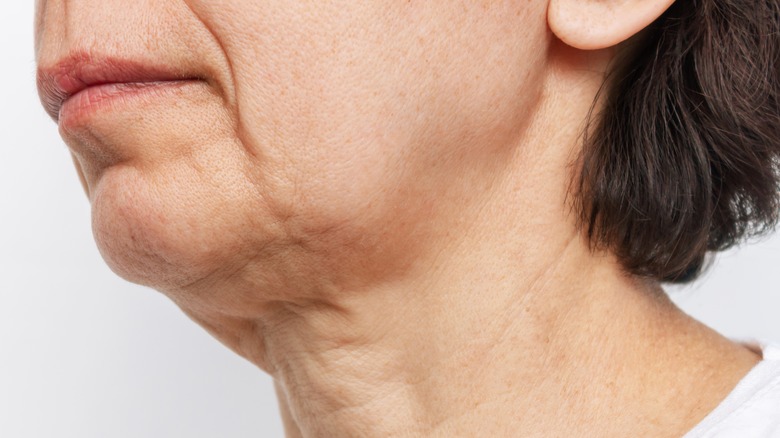What Is 'Smartphone Face' And Why Is It A Thing?
If you are a fan of British period piece films, you'd probably agree that Keira Knightley, Viola Davis, and Elle Fanning — these actors are examples of old-time beauty. Their visages exude a classic, timeless feel that hearkens to the long-gone era of Jane Austen or Shakespeare. Well, a smartphone face is the opposite of those classic faces. As writer Brandy Jensen observed in 2018: "some people just can't be believably cast in a period piece like sorry Jessica Biel you have a face that knows about text messaging." Biel responded via Instagram eventually, saying, "born for wifi."
When starring in a period drama, even when the hair and the costume are on point, there's something about a smartphone face that's downright unrelatable. You'd tell yourself: "There's no way Elizabeth Bennet would have looked like this." As you try to pinpoint the cause of that contradiction, you start wondering if it's just a matter of poor makeup technique or if human faces really evolve over time. If you've had that impression before and you can't quite put a finger on it, this article is written with you in mind. Here's what experts have to say about the smartphone face phenomenon and why it's pretty common nowadays.
A smartphone face is not a result of evolution
To have a smartphone face means, essentially, to have a more modern-looking face. Although there's no significant difference between the face of someone from the Silent Generation and a Gen Z person, the facial diversity is still there as a result of external factors rather than an evolutionary process. Behavioral ecologist Michael Sheehan tells Dazed: "The perceived differences in appearance of people between the mid-20th century and now is almost certainly the result of stylistic, grooming or diet changes rather than facial evolution."
Sheehan contends that balancing selection, which stabilizes our face diversity and maintains a constant baseline across time, is acting on the genetic variation that gives birth to human facial diversity. The differences between a modern-day face and a face of a previous decade are not so much a result of a natural cause than it is of improved aesthetics and healthcare standards in addition to lifestyle choices: Veneers, hair dyes, and plastic surgeries. Women in the past didn't have access to these beauty aids. They worked with what God gave them.
"Everyone looks the same now because of cosmetic surgery [and procedures like] filler and Botox," says YouTuber and expert on vintage beauty standards Laura Jane Atelier. Atelier uses Farrah Fawcett as an example, pointing out that the actor's distinctive appearance from the 1960s — thin lips, an angular jaw, and a high nose bridge — wouldn't be considered fashionable by today's beauty standards.
Do period film makers cast smartphone face
Although facial period-appropriateness might influence movie watchers' overall satisfaction, it's not a top-of-mind issue for makers of period-piece films. "As a casting director our job is to support the director's vision for the world they're creating, so it's less about modern vs period and more about trying to understand how the director imagines the characters," Lucy Bevan Casting's casting director Emily Brockmann tells Dazed.
To "create a fine balance," filmmakers like Brockmann are constantly on the lookout for unique faces, but they're also searching for performers who can immerse themselves in the period in which they're portraying the character and mesh well with the rest of the cast, says Brockmann. Therefore, do not feel hesitant about auditioning for a period film if you don't have a face with a glimmer of auld lang syne. There are other ways to express your past-time period persona, such as through your voice, manners, and the way you emotionally connect with your character. That being said, there's only so much modernity your appearance can carry into a classic work. In the opinion of Brockmann, faces that have undergone several cosmetic treatments can give off the impression of a more contemporary look and tend to appear out of place in films set in a historical period.
A smartphone face can also be a saggy face
Actually, the concept of "smartphone face" was put up for discussion among aesthetic experts over a decade ago — but it was about something else. The term "smartphone face" was once used to refer to faces that sag before their time as a result of technology addiction. "If you sit for hours with your head bent slightly forward, staring at your iPhone or laptop screen, you may shorten the neck muscles and increase the gravitational pull on the jowl area, leading to a drooping jawline," Dr. Mervyn Patterson of Woodford Medical tells the Evening Standard.
You can prevent a smartphone face by taking regular screen breaks and adjusting your postures. For instance, try holding your phone or tablet at your eye level whenever you use them so you don't have to bend down your chin to look at them, dermatologist Dr. Kiran Lohia tells Cosmopolitan. Remedy-wise, you can try face exercises to tone your facial muscles and minimize the sagging. To achieve faster and more targeted results, tightening treatments such as radiofrequency and laser resurfacing might be helpful.
Everyone's face is unique and interesting in its own way. Having a face that is in keeping with the times is unlikely to be a hindrance to your career or social life in any way. Your focus should not be on how to make your face look more futuristic or vintage, but rather to keep it healthy and radiant at every life stage.



